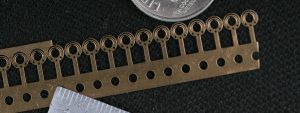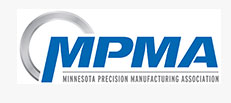 Precision metal stamping, a high-volume metalworking procedure, uses stamping tools to create sheet components from metal by forging the material into the desired shape. Each part is removed from the main sheet and stamped according to a pattern.
Precision metal stamping, a high-volume metalworking procedure, uses stamping tools to create sheet components from metal by forging the material into the desired shape. Each part is removed from the main sheet and stamped according to a pattern.
Precision metal stamping allows manufacturers to create parts that need undercuts, multiple features or fragile walls.
High pressure equipment is used to forcibly sheet metal into dies. This allows products to be shaped with great geometric accuracy and superior surface finish.
Advantages of precision metal stamping
Both manufacturers and end-users can enjoy a number of benefits from precision metal stamping.These include:
Production in high volumes
Precision metal stamping can produce thousands to millions of parts in one run. This is a much higher production rate than any other metalworking processes like CNC machining, fabrication, and welding.
This process is ideal for high-volume manufacturing where large quantities of metal parts are produced.
Uniformity
Precision metal stamping can produce a wide range of components using the same tooling. There is little to no setup or adjustment required between runs.
Precision metal stamping is more uniform than other industrial processes because of this.Because all products are made from sheet stock, they have identical wall thicknesses and almost identical surface finishes. This makes it easier to perform quality control inspections after production.
Precision metal stamping allows mass customization by automating the creation of changeable designs. This allows customers to quickly meet their unique needs.
Qualitative
Precision metal stamping can produce a variety of components with various surface finishes and tolerances.
It can also produce parts with thin walls and deep draws. These are difficult to produce using other processes such as CNC machining, fabrication, or welding.
Precision metal stamping is an excellent option for those industries, such as aerospace, automotive, medical implant, lighting and consumer electronic product design, that require precise shapes and thin walls.
Because of its ability make deep-drawing features, precision metal stamping is one the few technologies capable of producing the thin-wall geometries needed for electronic packaging applications.
It’s easy to use
Designers and engineers find precision metal stamping very useful because it creates complex shapes with minimal tool changes.
This allows clients to have greater design flexibility, allowing them to explore concepts early in product development.
They can also reduce material waste and costs, as fewer die modifications are required for every new design iteration.
Precision-designed components are much easier to produce using precision metal stamping because they require less time for secondary processes.This allows for more efficient workflows, particularly in high production volumes.
Minimizes Material Waste
Precision metal stamping can be an economically-friendly manufacturing process, as it requires minimal material to produce the parts.
This allows manufacturers to produce products with thin walls without complex secondary operations such as CNC machining which can be expensive and time-consuming.
Cost Efficiency
Precision metal stamping is much more affordable than large, die-cast machines that are used for mass production. It is a good option when production requirements are low in volume, but still high in quantity.
This system also allows for high flexibility with many design options that allow manufacturers to create custom projects for clients. These projects cannot be done in any other way.They can make higher profits without investing too much upfront.
Minimal Secondary Operations
Secondary operations such as cutting the threads or pre-drilling holes are rarely necessary with precision metal stamping.This process produces precisely shaped features simultaneously, so there is no room for error in pre-drilling holes or counter-sinking.Hand finishing, which is also a time- and cost-savings saver, can be costly and take longer to complete.
Precision Metal Stamping Capabilities, and Industries We Serve
Customers who wish to benefit from our experience in prototyping and designing metal parts for applications that require high durability can avail our in-house metal stamping service.
Customers have the option to choose from many different stamping options, including thickness, metal type and overall sheet size.
Metal stamping equipment is equipped with the latest equipment, such as transfer presses and press brakes. They can handle anything from heavy-duty parts to thin-gauge metals. Our competitive advantage is that we are able to produce delicate parts without compromising quality.
Our industry partners allow us to streamline supply chains and provide cost-effective ways to deliver products efficiently. This allows manufacturers to concentrate on their strengths instead of worrying about outsourcing services that they don’t have the expertise or capacity to manage.





